Summary: Web applications are much easier to maintain because they share a single codebase irrespective of various operating systems used to access them. What are the other merits of building web applications? Get more insights in the article below!
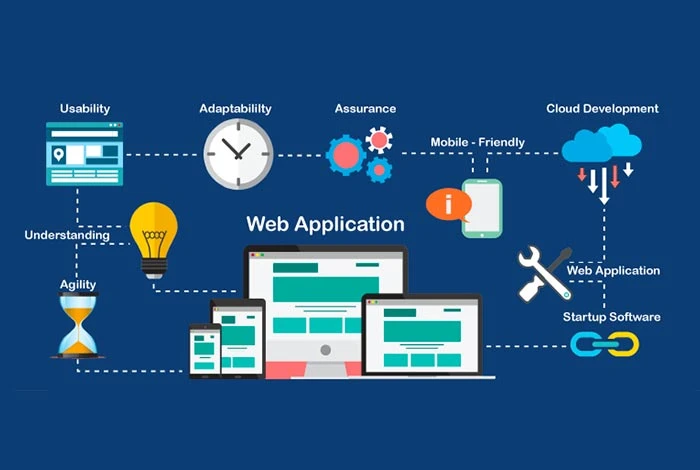
Web applications have become a popular medium for businesses to easily communicate with clients and employees as compared to desktop apps. It is because these apps can work on any browser and users can access them from any device like laptop, PC, or mobile phone.
Further, they are easy to maintain and update as they are created with a common codebase unlike native apps that are developed for a specific operating system. Learn more about web applications, their benefits, and usage below!
What is a Web Application?
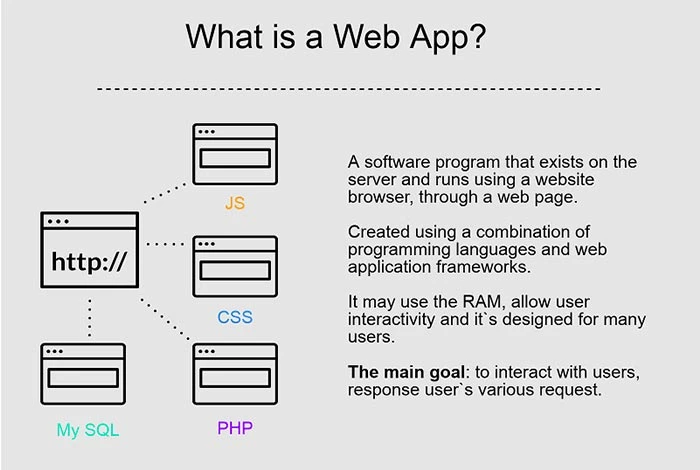
A web application is a software program that can be easily accessed over the web with an internet connection. It is developed through various programming languages like HTML and JavaScript that are supported by all major browsers. Unlike native apps, these apps do not need to be downloaded or installed for accessibility. These applications are complex and difficult to build and therefore you need an experienced team to develop these applications.
How Does Web Application Work?
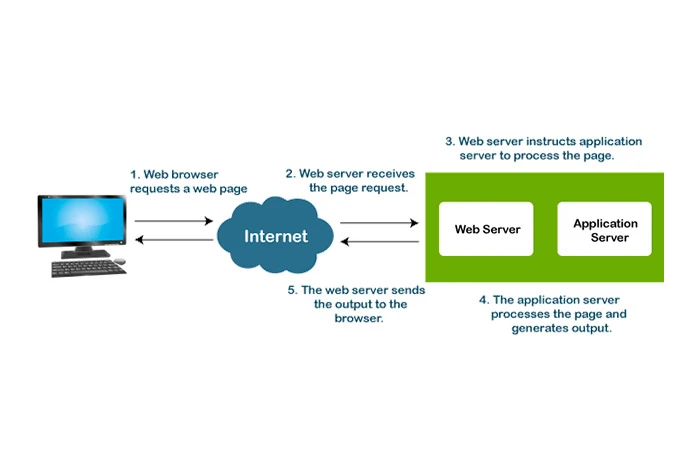
Most web applications need a web server for processing and managing user requests and an application server to complete the requested task. It also requires a database to perform the tasks requested. All of them are important elements of how a web application works. Here is how does a web application processes and responds to the user’s request.
Step 1: Users trigger a specific request to the web server using the internet through any web browser.
Step 2: The web server sends this request to the web application server.
Step 3: The web application server completes the requests by processing the database.
Step 4: Once processed, the web application server would generate and send results for all the requests to the web server.
Step 5: The web server then responds back to the users with the requested data that automatically shows up on the users display.
What are the Benefits of Web Applications?
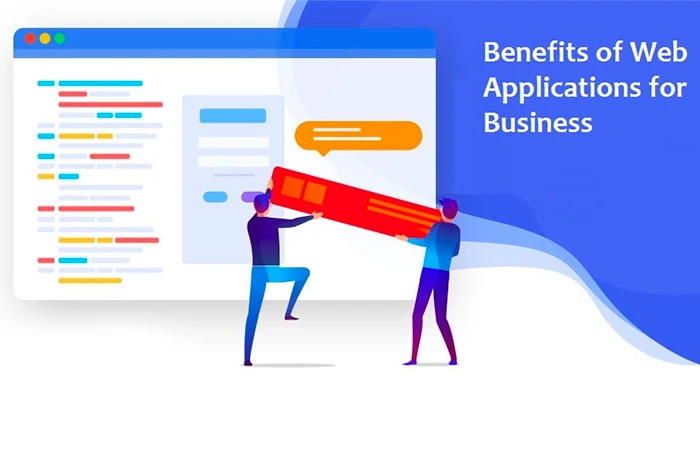
The web applications are easier to build and offer more security as data is stored on the cloud. In addition to that, some other benefits of web applications for users include: –
- No Compatibility Issues: The web applications are compatible with almost all types of web browsers like Chrome, Mozilla Firefox, Safari, etc. Therefore, making it easier for users to access it from any mobile, PC, or laptop just with the internet connection.
- No Installation Required: Built and deployed on the remote server which can be easily accessed from any modern web browser. Therefore, users do not need to install these applications and they can use it by logging in with credentials.
- Easy to Update: Quite easier to update as compared to the native apps because these are linked to the URL which automatically gets updated periodically. Hence, every user accesses the same updated version of the application irrespective of the operating system they are using.
- Faster App Development Process: Developing the web application is faster as compared to the native app because a common URL is developed to access the app. Thus, users need to create a common application without customizing it for different operating systems.
- App Store Approval is Not Required: The web applications can be used directly on the web without any need to download or install it. Therefore, app store approval is not required, and the web application can be launched immediately.
Difference Between Web App and Native App
Web applications can be used on any browser whereas native applications are built to work on a specific operating system. Additionally, there are several other differences between these two as elaborated below-
| Metrics | Web Application | Native Application |
| Installation | No installation is required as the app can be accessed directly via a browser. | These apps are designed for a specific OS and needs to be installed |
| Internet Connection | Web apps need a strong internet connection to run. | Native apps might run without an internet connection. |
| Apps Store Approval | These apps do not require any approval from the app store and can be launched quickly. | These apps do require approvals from the app store and might delay the app’s launch. |
| Performance | Web apps might work slower due to busy server issues and irresponsive sites. | These apps have better performance due to fast loading speed and responsive design. |
| Apps Development | Web apps development takes place faster as they are created with a single codebase. | Native apps development takes place slower as they are designed for specific operating systems. |
How are Web Applications and Websites Different?

Web applications are different from websites in several ways. The website comprises of several interlinked web pages that have the same domain name. Whereas a web app is the kind of software that you can access via a web browser. The website is meant to provide information to the end users. Whereas the web app is used to perform certain business tasks.
Moreover, website development involves the creation of web pages and content whereas web application development revolves around creating and improving the app’s functionalities.
Examples of Web Applications
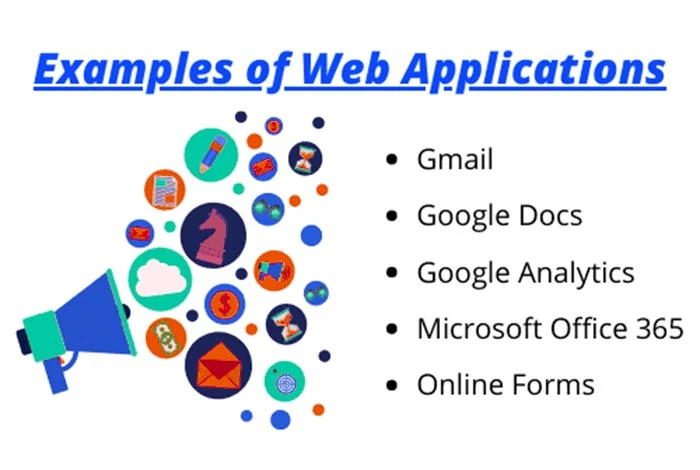
There are multiple types of web applications that you can access over the internet on any browser. Some of the most popular examples web applications include-
- Gmail: Gmail is one of the most popular email services launched by Google. It can be used either as a web service or as a mobile application. With it, you can send mails, schedule them, categorize mails, create calendar events, or even block spammers. Further, you can also join Google Meet’s meetings by syncing your account.
- Microsoft Office 365: It is a suite of subscription-based applications including Outlook, PowerPoint, Excel, etc. These apps can be easily accessed from any laptop, tablet, PC, or mobile phones. These apps help users to send emails, create and edit documents, create presentations, or present data in spreadsheets.
- Canva: Canva is an easy-to-use web app that helps user create different types of graphics like logos, posters, images, etc. Additionally, you can also create and schedule your social media content to be posted directly on your social media handles.
- Facebook: Facebook is a popular social networking website that can be used on the web and on smartphones. With it, you can easily chat with your friends and family online for free. Facebook can be used to post pictures, videos, status updates, live streaming, direct messaging, and much more.
- Netflix: Netflix is a popular video streaming and OTT platform available both as a web and mobile application. With it, users can watch TV serials, movies, or documentaries on a subscription basis. Depending on the subscription type, you can watch the same content on multiple devices.
- WhatsApp: WhatsApp is a free messaging app used to send and receive messages. It also offers its web version that can be easily accessed through the internet. With WhatsApp, you can also share video, audio, PDFs, excel files, etc. It can also be used to send stickers and GIFs in the chat.
- Zoom: Zoom is a video-conferencing platform used for conducting audio and video conference meetings, webinars, live chatting, and a lot more. Users can conduct or join meetings directly through any web browser without installing or downloading the app.
Conclusion
The adoption of web applications by businesses has increased as they are shifting from traditional application models to cloud-based models. They offer flexibility to quickly deploy and customize the application as per the business requirements. Unlike the native apps, they can also run across multiple operating systems thus increasing accessibility and customer reach.
Related Categories: Website Design Software | Website Security Software | Firewall | Web Content Management Software | Website Builder
FAQs
What is a web application?
A web application is a kind of application program which is stored in a remote server and can be used through the internet over a browser. Since these apps can be accessed through the internet, users do not need to install or download them on their smartphones.
What are web applications examples?
Web applications can be easily used over the browser without any need to download or install. Some examples of web applications include Gmail, Microsoft365, Yahoo, Amazon, Canva, Netflix, Spotify, and much more.
What are web application frameworks?
Web application frameworks are a type of software framework designed to assist users with the development of web applications. This might include web services, web APIs, web resources, etc. These frameworks serve as a standard way to easily develop and deploy web applications over the World Wide Web.
How do web applications work?
The web application works by processing the user’s requests through its server. Once the request is processed, the web server sends back the response with the requested data. These requests on the web applications are generally to view more data or save the data. For example, if you click on the learn more option, the web application server will provide users with more information.
What are 3 examples of a web app?
There are several types of web applications used for watching movies, doing shopping, creating graphics, conducting video conferences, and much more. Some of the most popular web applications include Netflix, Canva, Zoom, Amazon, etc.
Varsha is an experienced content writer at Techjockey. She has been writing since 2021 and has covered several industries in her writing like fashion, technology, automobile, interior design, etc. Over the span of 1 year, she has written 100+ blogs focusing on security, finance, accounts, inventory, human resources,... Read more


























